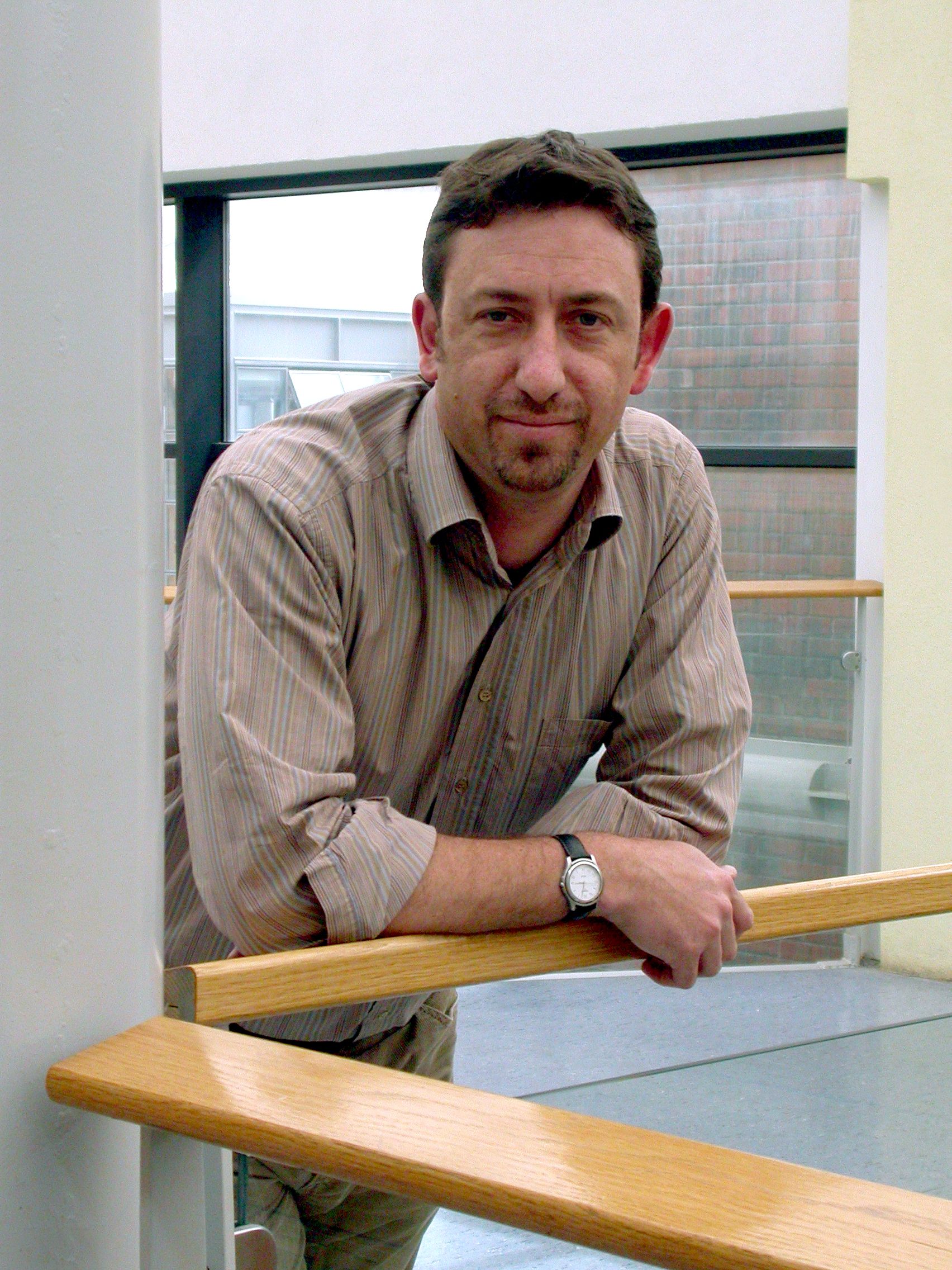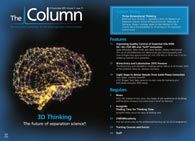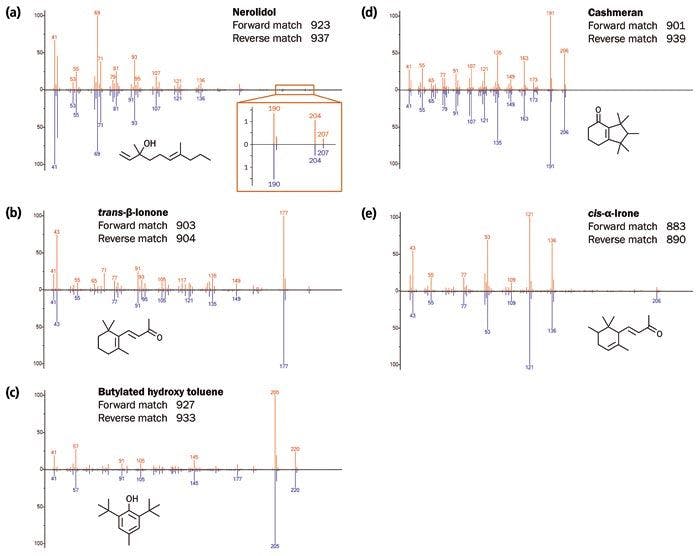Three-Dimensional Thinking: 3D Printing in Separation Science
Three-Dimensional Thinking
Brett Paull from ACROSS - Australian Centre for Research on Separation Science, School of Physical Sciences, University of Tasmania, Hobart, Australia, spoke to Kate Mosford of The Column about the possibilities for 3D printing in the separation science sector.
(Photo Credit: ALFRED PASIEKA/SCIENCE PHOTO LIBRARY/Getty Images)

Q. Can you explain why 3D printing could possibly create a revolution in analytical laboratories generally and in chromatography particularly?A: A great many analytical research laboratories involved in materials and instrumental development are beginning to see the benefit and potential 3D printing, or similar new additive fabrication technologies, have to offer. The ability to rapidly develop prototype devices and platforms is the real game changer; what previously took weeks or months of technician time (or was simply not possible) to fabricate, can be prepared in a few hours. As print resolution improves over the coming years, the application and complexity of such devices will only continue to get better. Is this a revolution? Well perhaps not quite yet, but certainly the technology is developing at a fantastic rate, and without doubt the instrumental manufacturers will (and probably already have) start to use components and parts produced using these new technologies. Q. Can you tell us more about your work involving 3D printing and stationary phases?A: In separation science (at least in chromatography) the workhorse is the stationary phase. It’s an interfacial science at its core, and so it comes down to the nature and surface of materials. 3D printing is beginning to look as though it will soon gain sufficient print resolution to enable us to print microstructured uniform stationary phases, which may require subsequent tailoring of surface chemistry (or biochemistry), but will at the very least be capable of providing some useful separations, albeit perhaps in the first instance within simple diagnostic platforms or low-cost devices. We are still at the beginning here and chromatographers are slow to change, so don’t expect 3D printed stationary phases to replace silica particle technology quite yet! Q. Could 3D-printed columns potentially provide better results than traditionally manufactured columns?A: In the future it is entirely possible (and I believe likely) that printed phases can be designed and fabricated with sufficient resolution and uniformity to achieve highly efficient separations. Multi-material 3D printers are already a commercial reality, and each generation comes with a greater range of materials and resolution. The real advantage of this technology will be the ability to print whole multi-component devices and integrated systems. This is definitely coming, and when it becomes cheaper and simpler to produce whole columns this way (that’s column, frit, and stationary phase together), then we will see the chromatography houses begin to adopt such methods. Q. What are the obstacles preventing columns created by 3D printing becoming a reality at the moment? A: First of all it should be stated that 3D printed stationary phases are already a reality.1 However, as mentioned above, printer resolution is not currently quite where it needs to be to produce phases capable of the separation efficiencies really required, and in a reasonable time and with acceptable cost. There is also the question of materials, with most of the commercial printer manufacturers currently perhaps more focused upon structural properties of their resins rather than surface chemical properties. Ideally, if one were to print a stationary phase, one would like to simultaneously produce the required surface functionality during the print. This is a tough ask, but not impossible, and solutions exist.
Q. What has been the response to your research involving 3D printing?A: Our research into this area has generated a lot of interest, particularly the 3D printing (laser sintering) of metal structures. The combination of materials engineering and analytical science stirs up a lot of imagination and possibilities in people’s heads, and it’s a great interface to work at. Hardcore chromatographers will take some convincing still, but the microfluidic community is more easily convinced of the utility of this technology going forward. Amongst the student community, research in this area is very attractive, as perhaps they see the future and its possibilities a little more clearly than many of us. Q. Are you planning to develop your research relating to 3D printing further?A: We are currently working within the ARC Centre of Excellence for Electromaterials (ACES), within which one of the research themes is “Electrofluidics and Diagnostics”.2 Immediately it has been obvious the potential that additive fabrication technologies can have in this area, particular in the rapid development and prototyping of low-cost fluidic-based diagnostic/analytical devices. These may or may not involve a separation step, but as the analytical challenges increase, the complexity of such devices has to follow, and the ability to produce integrated multifunctional and multicomponent devices is a mid- to long-term goal of this project.
References
- Conan Fee et al., J. Chromatogr. A 1333, 18–24 (2014).
- www.electromaterials.edu.au/electrofluidics-and-diagnostics/

Brett Paull
is a University of Plymouth (UK) B.Sc. (Hons), Ph.D. and D.Sc. graduate, and a Fellow of the Royal Society of Chemistry. He took up his first lectureship at the University of Tasmania from 1995 to 1997, before moving to Dublin City University (1998–2011). In 2011 Brett rejoined the University of Tasmania as Professor in the School of Chemistry, and is currently Director of the Australian Centre for Research on Separation Science. His research interests are centred in the analytical and bio-analytical sciences, a major driver being the expansion of the current boundaries of analytical science, developing new technologies and analytical approaches to enable greater qualitative and quantitative exploration of our chemical and biological environment.
This article was first featured in LCGC's digital magazine, The Column. Click here to view the full issue>>

Understanding FDA Recommendations for N-Nitrosamine Impurity Levels
April 17th 2025We spoke with Josh Hoerner, general manager of Purisys, which specializes in a small volume custom synthesis and specialized controlled substance manufacturing, to gain his perspective on FDA’s recommendations for acceptable intake limits for N-nitrosamine impurities.












